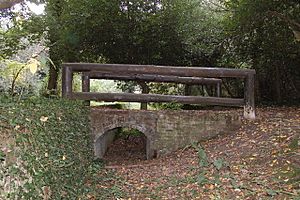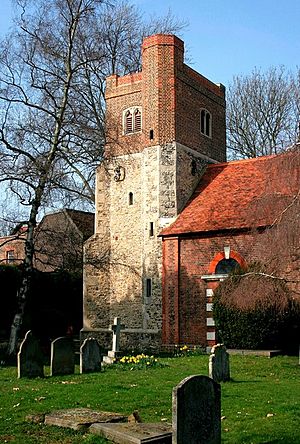Cranford Park facts for kids
Cranford Countryside Park is a huge park in London, England. It covers 144 acres, which is like 70 football fields! You can find it in the London Borough of Hillingdon, close to Heathrow Airport. Even though it's in a busy city area, many people call it a 'hidden gem'. This is because it's a bit tucked away, making it a peaceful escape.
The park is a special place for nature and history. It's part of the 'Crane Valley's parkland chain', a series of green spaces along the River Crane. You can visit the park from 7:30 AM until 9:00 PM in summer. During autumn, winter, and spring, it closes at sunset. The park has useful facilities like an information centre, toilets, and a car park. There's also a children's playground and paths for horse riding. You can get to Cranford Park by London Bus routes 81, 105, 111, 195, 222, H98, H28, and E6.
Discovering Cranford Park's Past
Cranford Park has a very long and interesting history. People have lived in this area since at least the Saxon times, over 1,000 years ago! This means the park grounds hold many old secrets.
Historic Buildings and Structures
Inside the park, you'll find several buildings that are very old and important. They are called Grade II listed buildings. This means they are protected because of their special history. One of these is the medieval St Dunstan's Church. There are also stables from the 1700s.
Long ago, there was a big house called a manor house in the park. But this house was taken down after World War 2. The park then opened to the public in 1949.
The Ancient St Dunstan's Church
The park surrounds St Dunstan's Church. This church, also known as St Dunstan with Holy Angels, Parish of Cranford, is very old. It is known to have been built during the time of Edward the Confessor. This king ruled England almost 1,000 years ago!
The land around the church has been owned by different important groups and families throughout history. This includes the Knights Templar, who were famous medieval knights. It's believed that a church has stood on this spot since at least the 700s. Some historians think it might have been built on a site where the Romans used to have small chapels.



